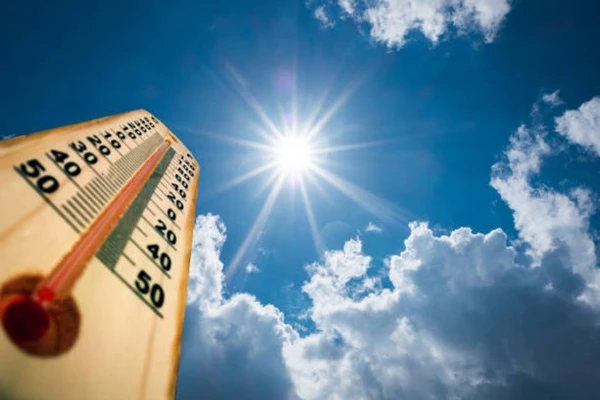The summer of 2023 was the hottest in 2,000 years
Changes in life goals propel success / Economic prosperity and happiness in China might be correlated if inequality is low
Although 2023 has been reported as the hottest year on record, the instrumental evidence only goes back to 1850 at best, and the majority of records are limited to specific regions. Researchers from the University of Cambridge and Johannes Gutenberg University Mainz have now demonstrated how unique the summer of 2023 was by utilising historical climate data from annually resolved tree rings spanning two millennia.
Despite accounting for natural climate fluctuations spanning several centuries, the summer of 2023 remained the warmest since the pinnacle of the Roman Empire, surpassing the thresholds of natural climate variability by an additional half-degree Celsius.

"When you look at the long sweep of history, you can see just how dramatic recent global warming is," said co-author Professor Ulf Büntgen, from Cambridge's Department of Geography. "2023 was an exceptionally hot year, and this trend will continue unless we reduce greenhouse gas emissions dramatically." The findings, published in the journal Nature, also show that in the Northern Hemisphere, the 2015 Paris Agreement to limit warming to 1.5 degrees Celsius above pre-industrial levels has already been exceeded.
From 1850 to 1900, early instrumental temperature records are scant and inconsistent. The researchers determined that the nineteenth century temperature baseline used to contextualise global warming is several tenths of a degree Celsius colder than previously believed by comparing early instrumental data with a large-scale tree ring dataset. The researchers determined that summer conditions in the Northern Hemisphere in 2023 were 2.07 degrees Celsius warmer than the average summer temperatures from 1850 to 1900 by recalibrating this baseline.
"Many of the conversations we have around global warming are tied to a baseline temperature from the mid-19th century, but why is this the baseline? What is normal, in the context of a constantly-changing climate, when we've only got 150 years of meteorological measurements?" said Büntgen. "Only when we look at climate reconstructions can we better account for natural variability and put recent anthropogenic climate change into context."
This information can be obtained from tree rings, which contain precisely-dated and annually-resolved data regarding summer temperatures in the past. The utilisation of tree-ring chronologies enables scientists to span significantly more distant epochs without encountering the unpredictability that accompanied early instrumental measurements.
The majority of cooler periods over the past two millennia, including the Little Antique Ice Age in the sixth century and the Little Ice Age in the early nineteenth century, occurred after large-scale sulphur-rich volcanic eruptions, according to tree-ring data. Provoked by the enormous quantities of aerosols that these eruptions release into the stratosphere, the surface rapidly cools. Following one of these eruptions in 536 CE, the coldest summer in the past two thousand years occurred; it was 3.93 degrees Celsius colder than the summer of 2023.
The majority of the warmer periods documented in the tree ring data are consistent with the El Niño climate pattern, also known as the El Niño-Southern Oscillation (ENSO). As a result of weakened trade winds in the Pacific Ocean, El Niño influences the weather globally and frequently causes warmer summers in the Northern Hemisphere. El Niño phenomena, which were initially documented by fishermen in the 17th century, are evident in tree ring data spanning a significantly longer period of time.
However, El Niño events have intensified over the last six decades due to global warming induced by greenhouse gas emissions, which has resulted in warmer summers. Predictions indicate that the current El Nio event will persist until early summer 2024, increasing the probability that temperatures will once again be broken this summer.
"It's true that the climate is always changing, but the warming in 2023, caused by greenhouse gases, is additionally amplified by El Niño conditions, so we end up with longer and more severe heat waves and extended periods of drought," said Professor Jan Esper, the lead author of the study from the Johannes Gutenberg University Mainz in Germany. "When you look at the big picture, it shows just how urgent it is that we reduce greenhouse gas emissions immediately."
The researchers acknowledge that although their findings are reliable for the Northern Hemisphere, acquiring worldwide averages for the corresponding time frame in the Southern Hemisphere is challenging due to the scarcity of data. Additionally, the Southern Hemisphere reacts to climate change differently than the Northern Hemisphere due to its vastly greater ocean coverage.
Reference: Jan Esper, Max Torbenson, Ulf Büntgen. 2023 summer warmth unparalleled over the past 2,000 years. Nature, 2024; DOI: 10.1038/s41586-024-07512-y
End of content
Không có tin nào tiếp theo
